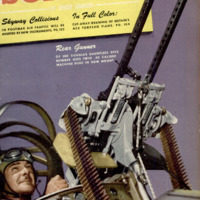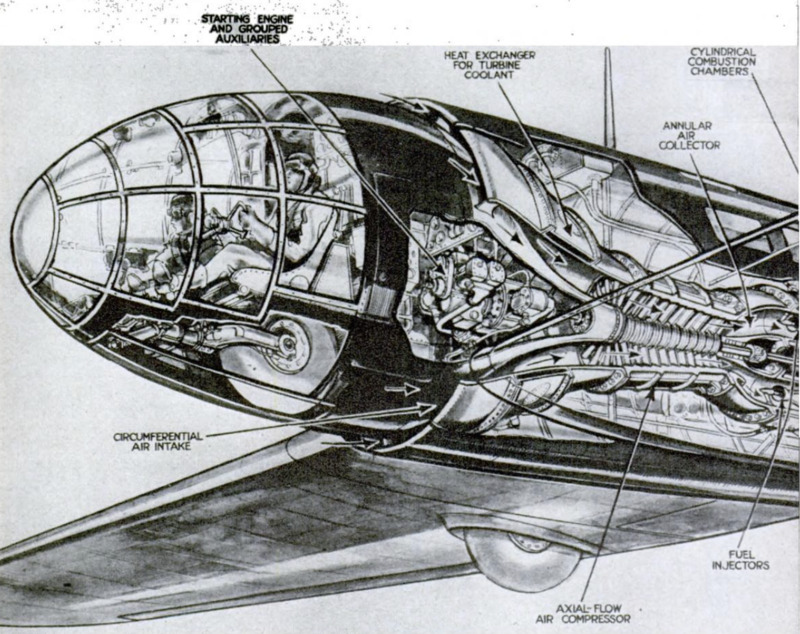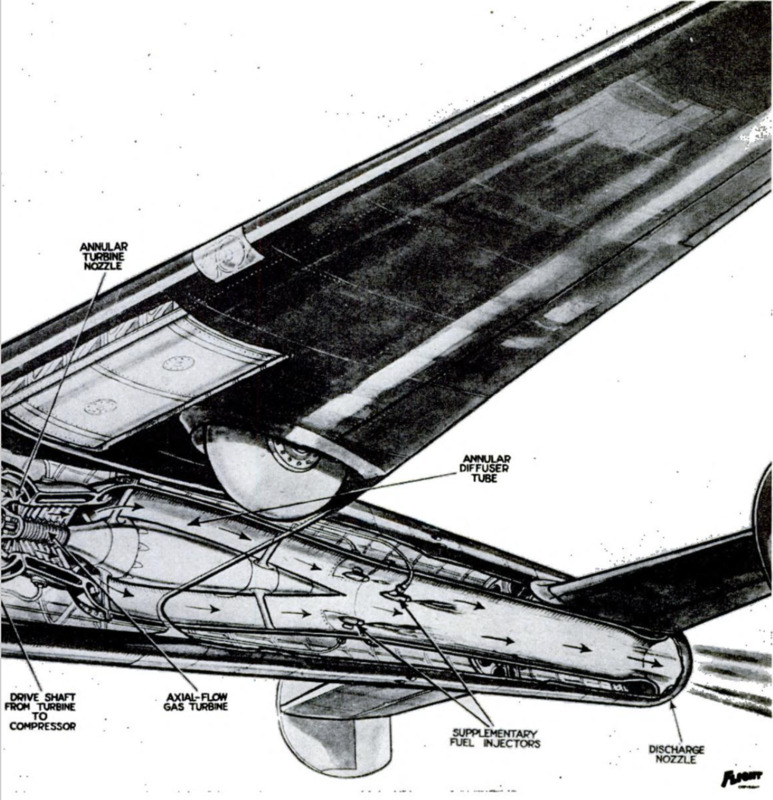Conception of an idealized jet-propelled plane combining a low landing gear with wheels partly submerged, and a single jet engine within the main fuselage
Item
-
Title (Dublin Core)
-
Conception of an idealized jet-propelled plane combining a low landing gear with wheels partly submerged, and a single jet engine within the main fuselage
-
Article Title and/or Image Caption (Dublin Core)
-
Propellerless Power for Planes Presents New Problems to Builders
-
extracted text (Extract Text)
-
JET propulsion, thrown into the lime-
light by the simultaneous announce-
ment of British and American warplanes
using this new type of power plant (P.S.M.,
April '44, p. 85), has been hailed in some
quarters as one of the greatest advances
in the history of aviation. Certainly it prom-
ises new speed and power for aircraft in
certain categories.
Apart from the advantages or disadvan-
tages of the jet engine as a source of power,
some interesting questions are raised by its
application to the conventional features of
aircraft design. How will it adapt itself to
the familiar lines of propeller-driven planes ?
Builders will be confronted with an entirely
new set of conditions in the apportionment
of space and the planning of auxiliary
equipment to make an efficient fighting or
working ship.
A tentative answer to some of these prob-
lems is seen in the drawing above. Made by
M. A. Miller for the magazine Flight, it
gives the British artist's conception of an
idealized jet-propelled plane combining var-
ious features common to this type of craft.
A notable change is the low landing gear,
with main wheels partly submerged and
nose wheel retracted. Having no propeller,
the jet plane is freed from the limitation
imposed on conventional planes, which must
stand high enough on the ground that their
blade tips will clear by at least nine inches
under all conditions. In warplanes, the ab-
sence of the propeller and engine cowling
also permits better visibility from the cock-
pit and greater freedom in the mounting of
forward guns.
In this conception, a single jet engine oc-
cupies the main fuselage of the plane, air
being picked up from around the nose by a
circumferential scoop. According to press
reports, the actual British jet plane has
two engines mounted in twin fuselages and
has been mistaken for the American P-38.
An auxiliary engine is used in starting, to
turn the air compressor. In operation, this
is done by the turbine.
-
Contributor (Dublin Core)
-
M. A. Miller (illustrator)
-
Language (Dublin Core)
-
eng
-
Date Issued (Dublin Core)
-
1944-05
-
pages (Bibliographic Ontology)
-
82-83
-
Rights (Dublin Core)
-
Public Domain (Google digitized)
-
Archived by (Dublin Core)
-
Lorenzo Chinellato
-
Alberto Bordignon (Supervisor)
 Popular Science Monthly, v. 144, n. 5, 1944
Popular Science Monthly, v. 144, n. 5, 1944




